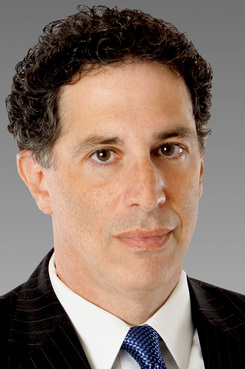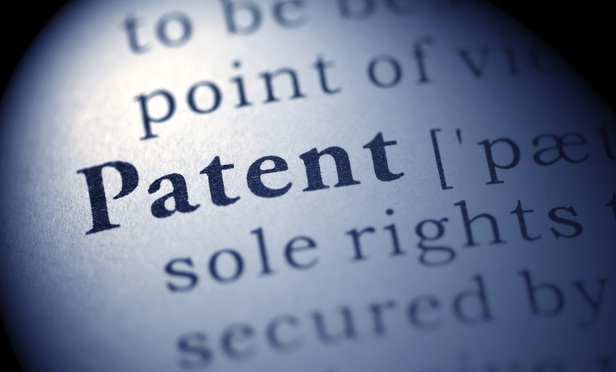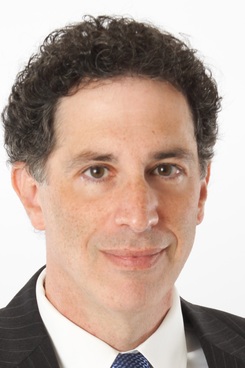Lawrence E Ashery

February 20, 2018 | The Legal Intelligencer
Court Applies 'Chevron' Deference to Patent Law in 'Fractured' DecisionThe Chevron deference doctrine, based on the U.S. Supreme Court case of Chevron, U.S.A. v. Natural Resources Defense Council, 467 U.S. 837 (1984) requires a federal court to defer to a federal agency's interpretation of a federal statute in its area of expertise.
By Lawrence E. Ashery
6 minute read

January 23, 2018 | The Legal Intelligencer
Several Steps to Improve Your Patent Strategy in 2018If the survival and growth of your business depends on the development of new technology, the beginning of the new year is a good time to think about your intellectual property (IP) protection and how it can be improved.
By Lawrence E. Ashery
6 minute read

December 27, 2017 | The Legal Intelligencer
2017 Patent Applications Can Predict Innovations of the FutureAs companies develop new ideas, they often file patent applications with various patent offices in order to protect their investments. Here are a few patents (and patent applications) that were published in 2017 and that may predict how innovation will influence the future.
By Lawrence E. Ashery
7 minute read

October 24, 2017 | The Legal Intelligencer
Don't Let Your Trademark Become GenericA music video went viral this month, but it's doubtful you know any of its musicians. The tune is quite catchy, and the performance is not only professional, but very enjoyable. What is the theme of the song? Coming of age? A broken heart? No. It's a music video about Velcro Brand Fasteners and the VELCRO trademark.
By Lawrence E. Ashery
16 minute read
September 26, 2017 | The Legal Intelligencer
Why Patent Claims Language Must Be Clearly WrittenEveryday business communication is hard enough. With all of the subtleties and nuances of language, the message received by an individual may not match what was intended. But with patent claims, the need for definiteness is far greater. Convince the Patent Office to allow your patent claim with understandable meaning, and the resulting patent may (emphasis "may") have value.
By Lawrence E. Ashery
6 minute read

August 22, 2017 | The Legal Intelligencer
Patent Invalidated Based on Inequitable ConductIt's been called the atomic bomb of patent law—inequitable conduct. It happens when a patent is applied for, but the duty of candor, disclosure and good faith toward the U.S. Patent and Trademark Office (USPTO) is violated. If proven to have occurred during patent procurement, then the entire resulting patent becomes unenforceable. Even if inequitable conduct affects a very limited aspect of a patent application, the consequences are catastrophic as the ability to assert the resulting patent vanishes.
By Lawrence E. Ashery
6 minute read
July 26, 2017 | The Legal Intelligencer
Trademarks and the First Amendment Considered by Supreme CourtWhen I studied constitutional law in law school, one subject was certainly never mentioned in that class: trademarks. After last month's U.S. Supreme Court decision in Matal v. Tam (582 U.S. ____ (2017)), that may change.
By Lawrence E. Ashery
7 minute read
June 19, 2017 | The Legal Intelligencer
Significant Change in Patent Exhaustion From the Supreme CourtWhen was the last time you sold your used car and worried about infringing the patent rights of the manufacturer? My guess is you would say "never." It's not as if people are selling their pre-owned cars on eBay or Craigslist (for example) and being sued for patent infringement by the likes of GM, Ford or Toyota. But think about it—the modern automobile includes tons of technology that is covered by literally thousands of patents. And U.S. patent law permits a patent owner to "exclude others from making, using, offering for sale, or selling its invention throughout the United States ...," (35 U.S.C. Section 154(a)).
By Lawrence E. Ashery
11 minute read

May 23, 2017 | The Legal Intelligencer
The Risk of Losing Patent Rights When an Invention Is 'On Sale'One of the most frequent errors committed by inexperienced inventors is the untimely sale or public use of their invention. The sale of a product that includes a new invention—before a patent application is filed—destroys patent rights in many countries. Not so in the United States, where U.S. law provides a 12-month "grace period" to file for patent protection after a public use or sale
By Lawrence E. Ashery
12 minute read

April 25, 2017 | The Legal Intelligencer
Patent Marking Offers Rights, Quick Damage RecoveryHave you ever noticed patent numbers on a product that you purchased? Those patent numbers show up everywhere: on the back of an appliance, on the bottom of a candy dispenser—even on the cardboard insulator for a hot coffee cup. Placing a patent number on a patented product is called "patent marking" and it is strictly voluntary, but doing so can afford the patent holder with significant rights.
By Lawrence E. Ashery
12 minute read
Trending Stories
- 1The Law Firm Disrupted: For Big Law Names, Shorter is Sweeter
- 2Wine, Dine and Grind (Through the Weekend): Summer Associates Thirst For Experience in 'Real Matters'
- 3'That's Disappointing': Only 11% of MDL Appointments Went to Attorneys of Color in 2023
- 4What We Know About the Kentucky Judge Killed in His Chambers
- 5'I'm Staying Everything': Texas Bankruptcy Judge Halts Talc Trials Against J&J
More from ALM
- Morgan & Morgan Class Action Attorneys Detail Pathway to Success Within Cybersecurity and Data Privacy Practice 1 minute read
- Holwell Shuster & Goldberg Partners Leverage 'Hostile' Witnesses to Secure $101 Million Verdict Against Walmart 1 minute read
- Legal Speak at General Counsel Conference Midwest 2024: Mike Andolina, Partner, White & Case 1 minute read



